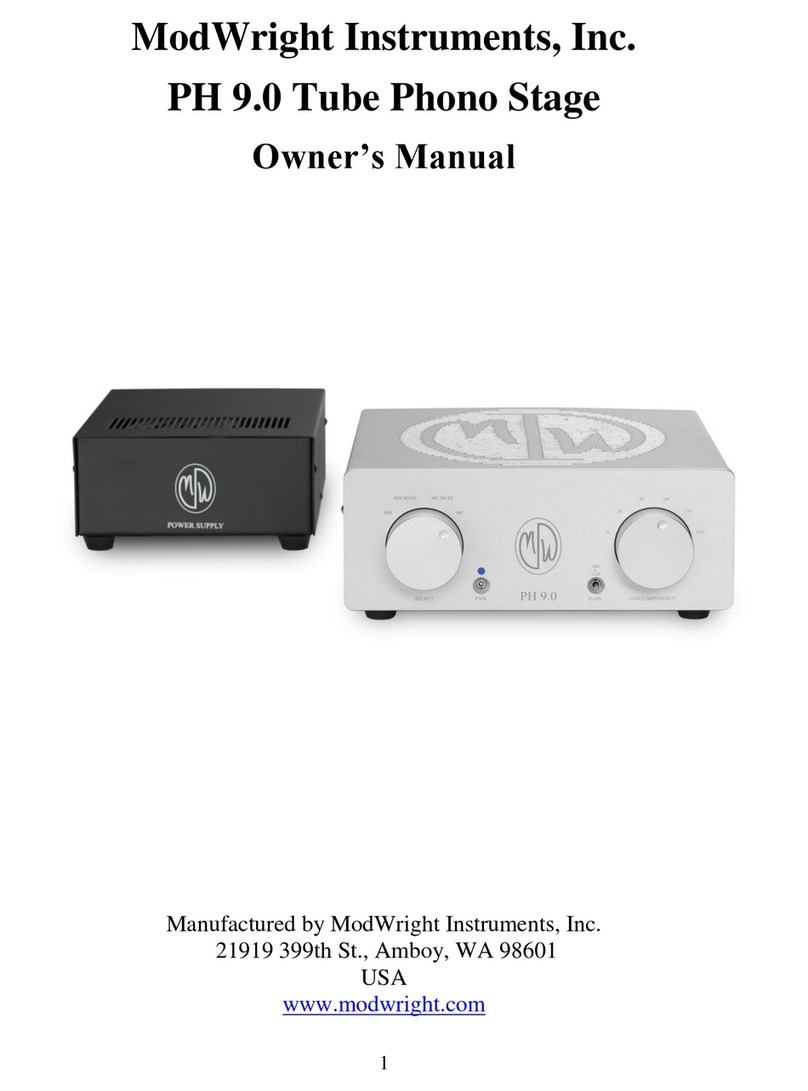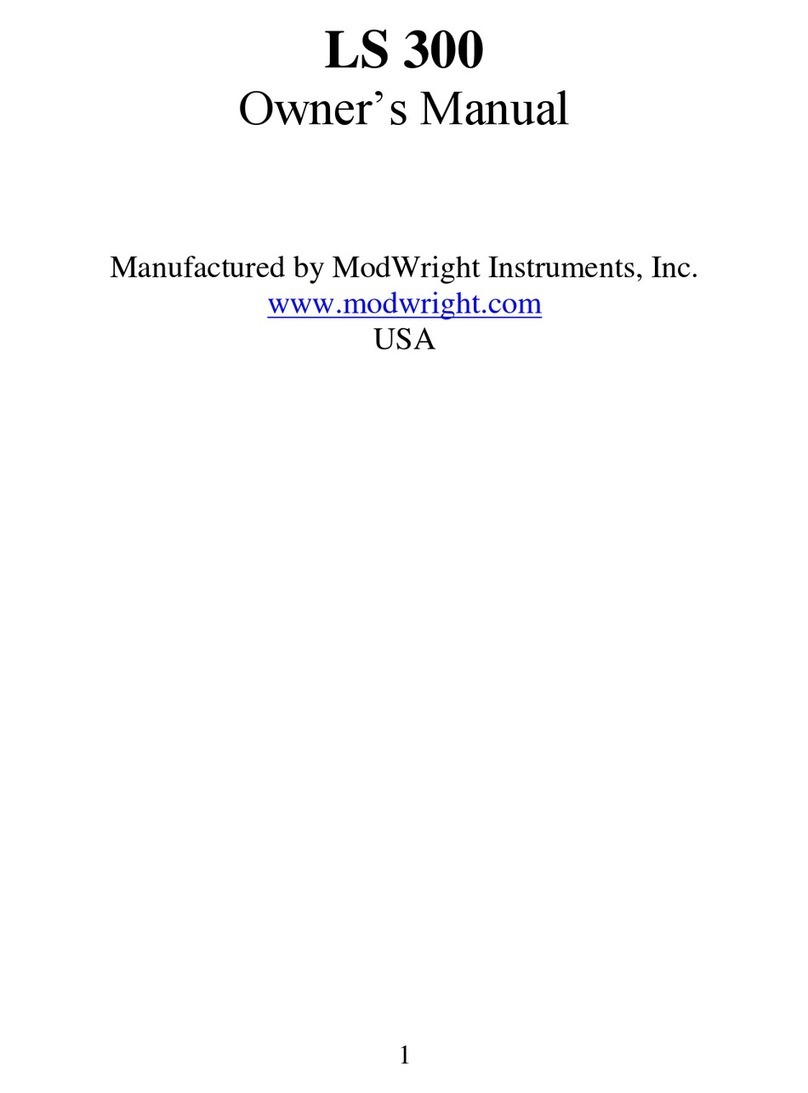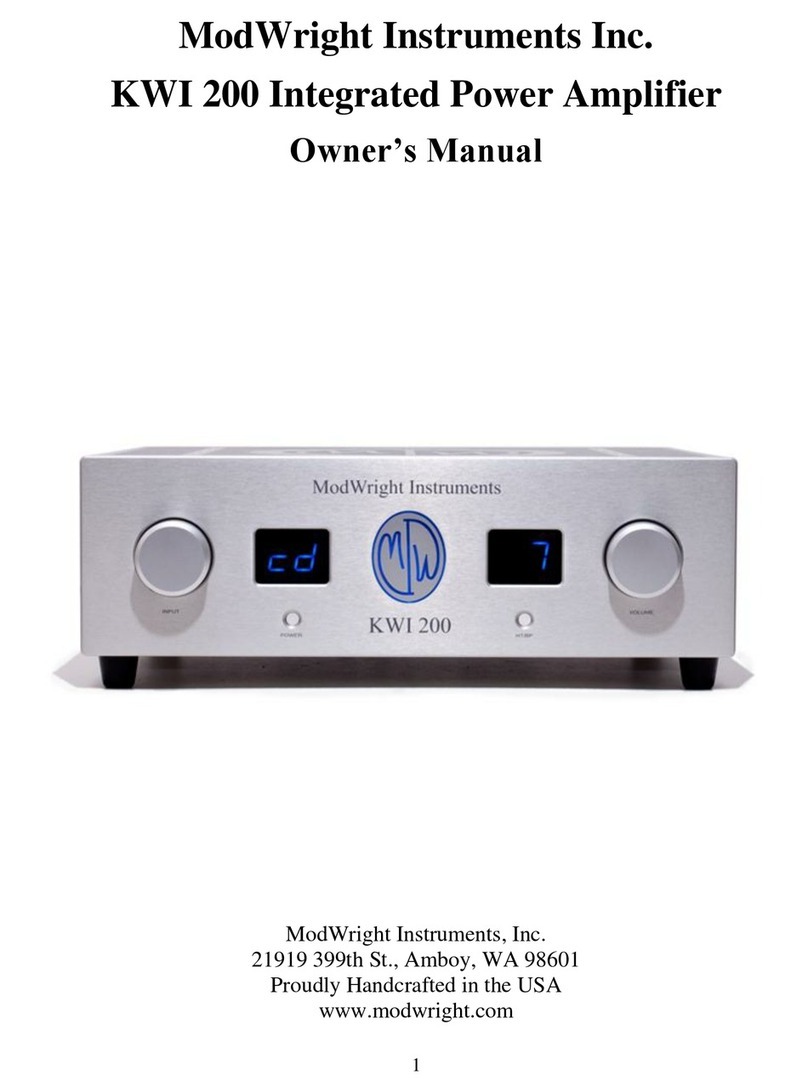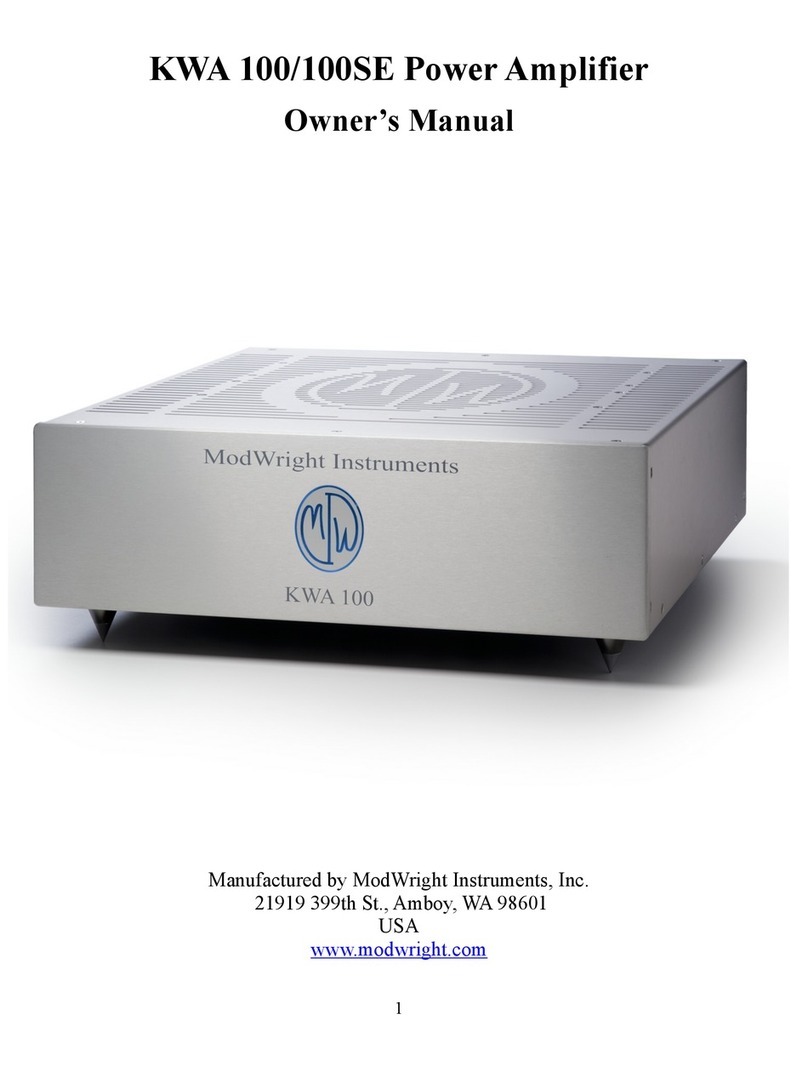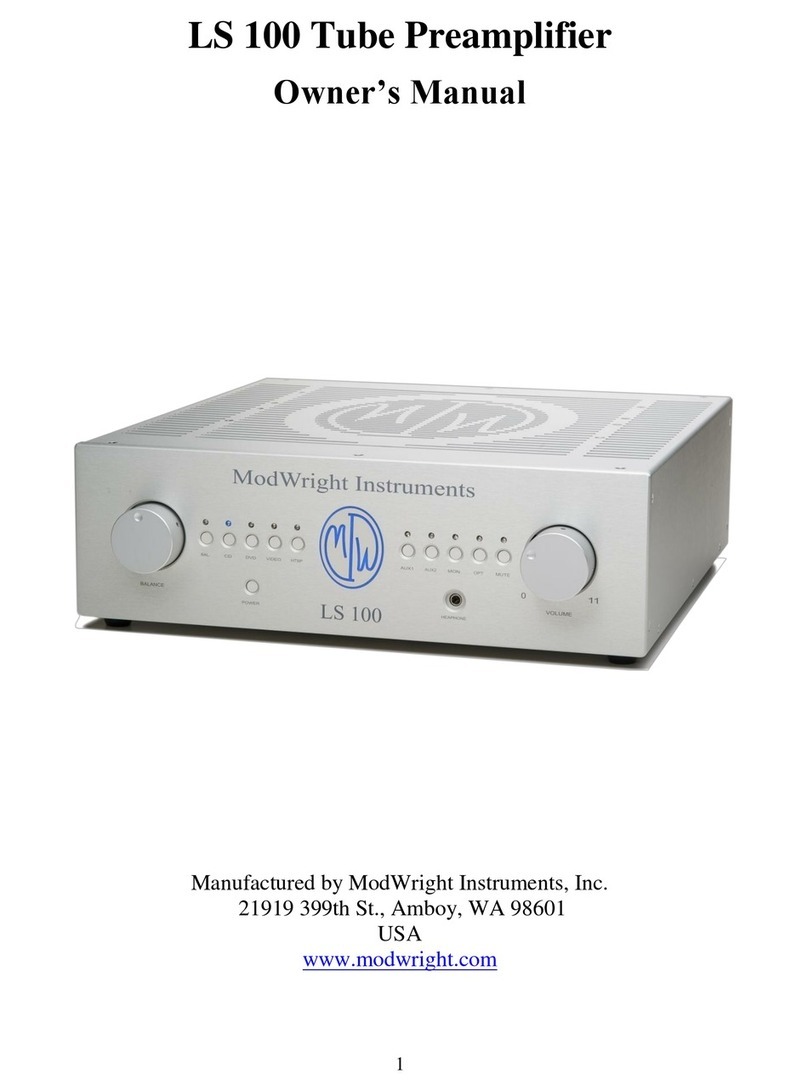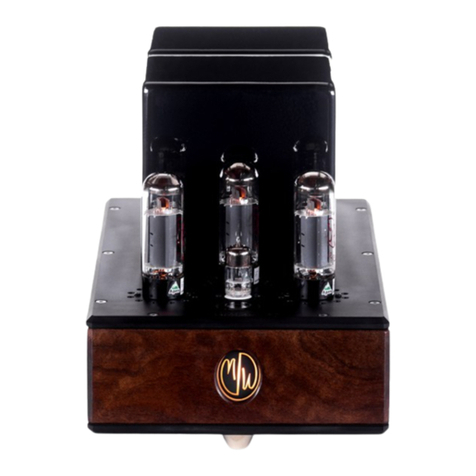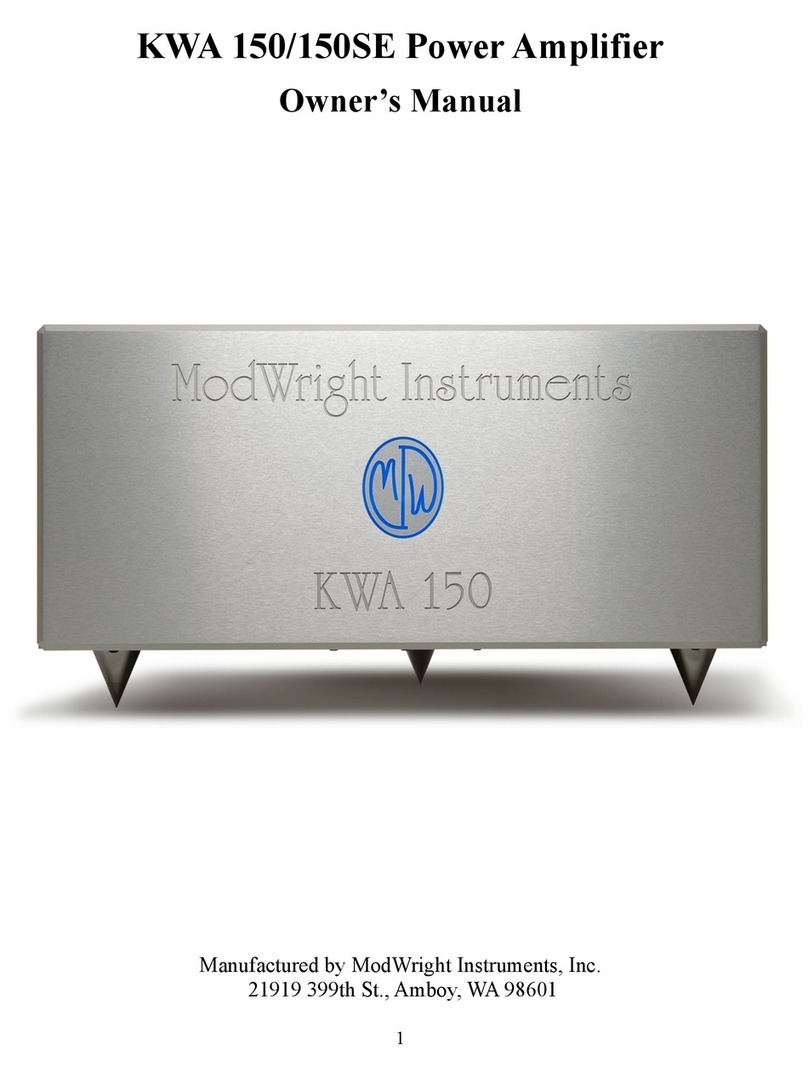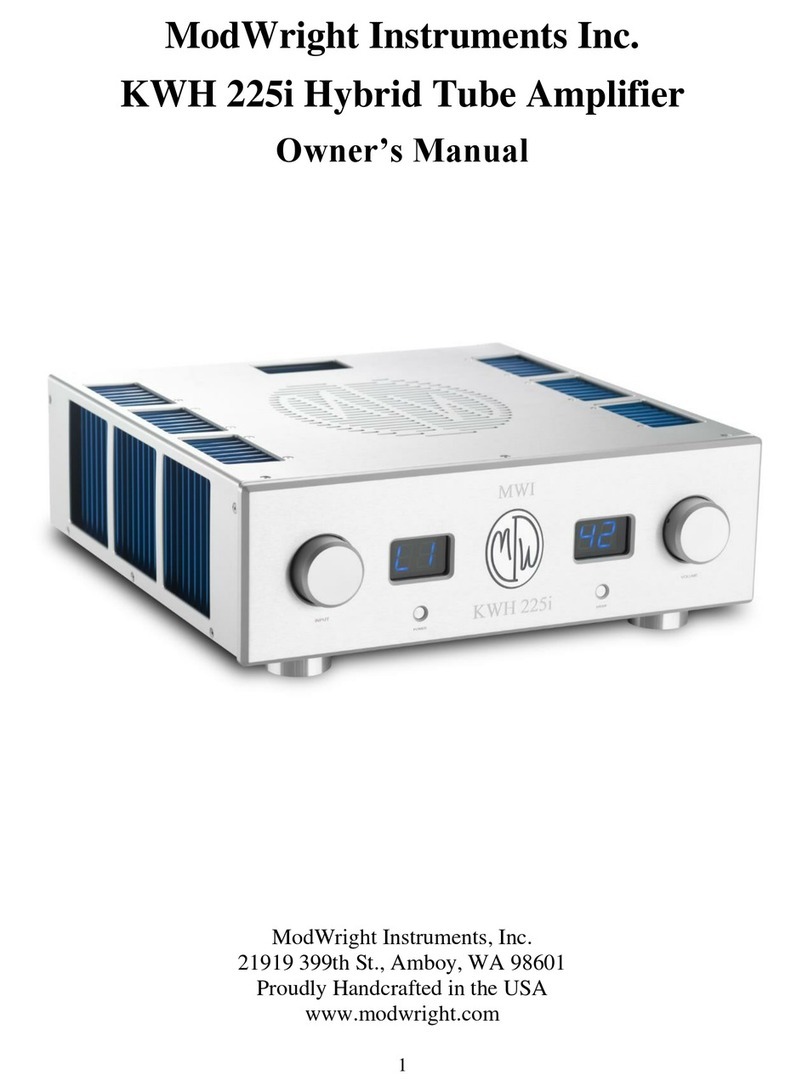
3
Setup:
It is always recommended to remove all tubes before shipping the unit. Be sure that the
Ambrose One is NOT connected to AC power and that power plug is disconnected from
the external supply and wall outlet. Install (2) 6922 signal tubes in 9-pin ceramic sockets
and (2) rectifier tube in ceramic octal sockets in preamp prior to use. All tubes may only
be inserted one way.
After tubes are installed, connect both umbilicals to the ‘male’ 8-pin barrel sockets on the
back of the preamp. The umbilicals must be lined up with pins and then outer barrel
securely tightened until connection is secure. Connect the other end of the two umbilicals
to the two ’female’ 8-pin barrel sockets on the external power supply and secure in the
same manner. Both umbilicals are identical and it does not matter which order they are
connected, right to left. They will only fit one way however, via ‘male’ and ‘female’ pin
connections at umbilical and chassis/jack connectors. Only after this, should the power
cord be connected to the external power supply
.
The Ambrose One has two sets of fully balanced inputs, located on the back of the unit,
labeled ‘BAL IN 1’and ‘BAL IN 2’. The next two inputs are single ended RCA
connections, labeled ‘III’ and ‘IV’. The fifth set of RCA inputs is the Home Theater
Bypass inputs, labelled ‘HTBP’. Inputs are manually only, selected via the left hand
rotary selector switch. There are four positions, starting with BAL IN 1, BAL IN 2, III
and IV. HTBP input may be selected at any time by flipping the rear toggle marked
HTBP to the ON position. All source inputs are received the same by the unit, except for
HT/BP input. HT/BP input should ONLY be used as input from a Home Theater
Preamp/Processor or other source with built-in volume control. This input only, may be
configured to bypass all gain and volume control stages, directly feeding RCA Main
outputs. When HT/BP switch is ‘UP’, any input connected to HT/BP RCA jacks will be
routed straight to RCA main outs only, bypassing all gain stages and volume control.
CAUTION: WHEN AMBROSE ONE IS POWERED DOWN, HT/BP INPUT
AUTOMATICALLY DEFAULTS TO HOME THEATER BYPASS MODE.
The Ambrose One has two sets of fully balanced main outputs, labelled ‘BAL OUT 1’
and ‘BAL OUT 2’. There are also two single ended RCA main outs, labeled ‘MAIN 1’
and ‘MAIN 2’.
NOTE: There is a ground toggle switch on the rear of the unit labeled ‘FLOAT’ and
‘GND’. When this toggle is in the GND position, then RCA and XLR outs may be used
at the same time, with XLR outs acting as SE outputs, by grounding pin 3 of the XLR
jacks. When operating in fully balanced XLR output mode, you must flip the toggle to
the FLOAT position. This then allows fully balanced output operation ONLY. Use of
RCA outs with ground switch in FLOAT position will cause a system hum.
You may ONLY operate both XLR and RCA outputs at the same time with the Ground
toggle in the GND position. You may only operate the XLR outputs in fully balanced
mode with the ground toggle in the FLOAT position. In this setting, the preamp will
operate with fully balanced XLR outs ONLY, but not RCA and XLR outs at the same
time.
